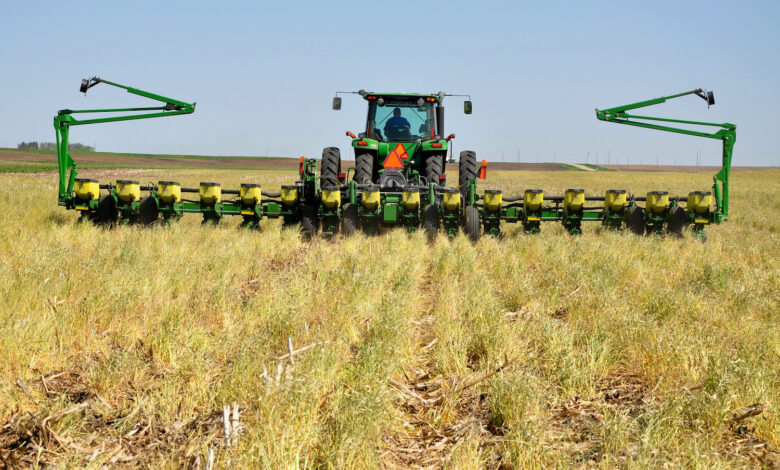
Regenerative Agriculture Practices have gained popularity in recent years as a sustainable and environmentally friendly approach to farming. By focusing on improving soil health, biodiversity, and water management, regenerative agriculture practices can help farmers and ranchers not only increase their yields but also protect the long-term health of their land. In this blog post, we will explore how you can implement regenerative agriculture practices on your farm or ranch to reap the benefits of this holistic approach.
Understanding the Basics of Regenerative Agriculture
At the core of regenerative agriculture lies the objective to restore, maintain, and enhance ecological balance. Central to this approach is the health of the soil, which is seen as a living ecosystem teeming with bacteria, fungi, and other microorganisms that are essential for the well-being of plants. Regenerative agriculture practices are designed to nurture this soil life, leading to a host of benefits including improved plant growth, increased water retention, and the sequestration of carbon dioxide from the atmosphere.
- To achieve these goals, regenerative agriculture promotes several key strategies. Minimizing soil disturbance is paramount, with a focus on reducing or eliminating tillage to maintain soil structure and protect microbial communities. The use of cover crops plays a crucial role, not only in preventing soil erosion but also in adding organic matter to the soil, fixing nitrogen, and enhancing biodiversity above and below ground. Integrating livestock with crop production systems forms another pillar of regenerative agriculture, encouraging nutrient cycling and soil regeneration through natural grazing patterns.
- The principles of regenerative agriculture also advocate for a diverse mix of perennial and annual plants within agricultural systems. This diversity enhances resilience against pests and diseases while promoting a balanced ecosystem. Moreover, such practices aim to mimic natural processes, creating agroecosystems that are self-sustaining and require minimal external inputs. Through these interconnected practices, regenerative agriculture seeks to rebuild the organic matter in soil, fostering a robust system that can withstand the challenges of climate change and support abundant life.
Conducting a Soil Health Assessment
Before diving into the application of regenerative agriculture practices, it’s imperative to assess the health of your farm’s soil. This initial step is crucial for tailoring your regenerative strategy to your land’s specific needs. A soil health assessment involves more than just a cursory glance at the surface; it requires a comprehensive evaluation that can uncover the secrets lying beneath.
- To start, gather soil samples from various locations and depths across your farm. This varied collection will give you a clearer picture of your soil’s condition and variability. Analyzing these samples in a lab will provide vital information on nutrient levels, pH balance, organic matter content, and the presence of beneficial microorganisms. Such data is invaluable in determining the necessary amendments and interventions to revitalize your soil.
- Beyond laboratory analysis, observe the physical and biological aspects of your soil. Look for signs of compaction, the structure of the soil aggregates, and the presence of earthworms and other soil life. These indicators can reveal much about the soil’s current state and its potential to support regenerative practices.
- Equipped with this comprehensive understanding of your soil’s health, you can make informed decisions on which regenerative techniques to implement. Whether it’s choosing the right cover crops to enrich the soil, adjusting your grazing patterns, or determining the need for no-till practices, a soil health assessment is the first step towards a successful regenerative agriculture strategy on your farm or ranch.
Implementing Cover Cropping Strategies
Cover cropping stands as a cornerstone within regenerative agriculture practices, offering a multi-faceted approach to enhancing soil vitality. These crops, strategically planted during off-season periods when the land would otherwise lay bare, play a crucial role in a holistic farm management plan. The practice not only safeguards against erosion but also serves to naturally suppress weed growth, reducing the reliance on chemical herbicides.
- Diverse selections of cover crops, including species such as clovers, vetch, rye, and buckwheat, are tailored to address specific soil deficiencies and goals. Legumes, for example, are lauded for their ability to fix atmospheric nitrogen, enriching the soil without the need for synthetic fertilizers. Meanwhile, deep-rooted plants can break through compacted layers, improving soil structure and facilitating water and nutrient penetration.
- Incorporating cover crops into a rotation enhances underground biodiversity, fostering a habitat for beneficial microorganisms. These organisms, in turn, contribute to nutrient cycling and plant health. The decaying matter from cover crops further adds organic material to the soil, bolstering its water-holding capacity and resilience against extreme weather conditions.
- To optimize the benefits of cover cropping, it is essential to consider timing, species selection, and management practices. A carefully planned cover crop system can efficiently capture and recycle nutrients, minimize labor, and provide forage opportunities for livestock, seamlessly integrating into existing farm operations. By prioritizing soil health through cover cropping, farmers lay the groundwork for a sustainable, productive agricultural system that can endure and thrive for generations.
Diversifying Plant and Animal Life on Your Farm
Diversification is a critical strategy within regenerative agriculture practices, promoting a balanced ecosystem on your farm. By incorporating a broad range of plant species and integrating various animal breeds, you can tap into natural synergies that enhance soil fertility, control pests, and break disease cycles. A diverse crop rotation supports a multitude of beneficial insects and wildlife, contributing to pollination and natural pest control. This biodiversity not only reduces the dependency on chemical inputs but also stabilizes yields by mitigating risks associated with single-crop failures.
- When considering livestock, select species and breeds that complement your cropping systems. For example, poultry can manage pests and fertilize the soil, while larger livestock can control weed growth through grazing and contribute to soil health with their manure. The integration of animals into crop areas after harvest can also facilitate the breakdown of crop residues, turning them into valuable organic matter that enriches the soil.
- Creating habitats such as hedgerows, buffer strips, and ponds can further encourage wildlife diversity, offering refuge and resources for a variety of species. These natural elements not only support ecological balance but can also enhance the aesthetic and environmental value of your farm.
- Through strategic planning and thoughtful management, diversifying plant and animal life fosters a resilient agricultural system. This approach not only improves the ecological function of your farm but also its economic viability, by providing a range of products and services that can open new markets and opportunities for farmers dedicated to regenerative practices.
Integrating Crop and Livestock Systems
The symbiotic relationship between crop production and livestock management is a hallmark of regenerative agriculture, underscoring the importance of creating systems where both can thrive together, enhancing the overall health and productivity of the farm. This approach mirrors the efficiency and balance of natural ecosystems, where plants and animals support each other’s growth and survival.
- By strategically incorporating livestock into crop areas, you can achieve several regenerative outcomes. Grazing animals on cover crops or post-harvest residues returns nutrients directly back to the soil in an accessible form, reducing the need for synthetic fertilizers. This natural fertilization process, coupled with the physical action of the animals’ hooves, can aid in breaking up compacted soil layers, thereby improving aeration and water infiltration.
- Moreover, the movement and grazing patterns of livestock can be managed to ensure even distribution of manure across the land, which is critical for maintaining soil fertility. This method of integration also reduces waste management costs and the environmental impact associated with concentrated animal feeding operations.
- To successfully integrate crop and livestock systems, careful planning is required. This includes selecting appropriate livestock species that match the farm’s crop rotation cycles and ensuring that the timing of grazing aligns with the growth stages of cover crops to maximize benefits without compromising crop yields. Additionally, managing the density of livestock to prevent overgrazing is crucial for preserving soil structure and preventing erosion.
- Through thoughtful implementation, integrating crop and livestock systems promotes a cycle of renewal, where each element of the farm contributes to the regeneration of the other. This holistic approach not only boosts farm productivity but also enhances resilience against environmental stressors.
Adopting No-Till or Reduced Till Practices
Transitioning to no-till or reduced till practices is a transformative step towards enhancing the sustainability of a farming operation. By limiting the disturbance to the soil, these methods support a myriad of ecological benefits. Soil conservation is markedly improved as the structure remains intact, fostering an environment where water infiltration and retention are optimized. This approach significantly contributes to the maintenance of healthy, vibrant soil ecosystems.
- In the realm of carbon sequestration, no-till farming is particularly effective. The process of tillage is known to expose soil organic matter to oxygen, leading to its rapid decomposition and release of carbon dioxide into the atmosphere. By minimizing tillage, carbon remains sequestered in the soil, contributing to the mitigation of climate change impacts.
- Moreover, these practices are instrumental in preserving the biodiversity of the soil. The undisturbed soil becomes a haven for a variety of organisms, from beneficial insects to crucial microbial communities, all playing vital roles in nutrient cycling and pest control. This biological richness is essential for the resilience of the farming system against stresses and diseases.
- Farmers adopting no-till or reduced till methodologies may also observe an increase in operational efficiencies. The reduction in the need for mechanical soil manipulation translates into lower fuel and labor costs, contributing to the economic viability of the farm.
- Implementing these practices requires a thoughtful approach, particularly in the initial phases. Cover crops and crop rotations become critical tools in managing weeds and maintaining soil health without the recourse to traditional tillage. With time and commitment, the transition to no-till or reduced till practices can lead to a profoundly positive impact on the farm’s ecosystem and long-term sustainability.
Managing Water Wisely
Effective water management is a pillar of regenerative agriculture, playing a pivotal role in maximizing the efficiency of water use and ensuring the health of the ecosystem. Innovative techniques such as contour farming and mulching align with nature’s rhythms to enhance water infiltration and minimize evaporation, thereby conserving precious moisture for crop use. Rainwater harvesting systems capture and store runoff, providing an additional water source during dry spells and reducing dependence on external water supplies.
By adopting these strategies, farmers can mitigate the impacts of extreme weather conditions, ensuring a stable water supply even in times of scarcity. Additionally, practices like cover cropping contribute to improved water retention in the soil, reducing the need for frequent irrigation and helping to sustain crops through drought conditions. Embracing these water-wise approaches supports the overarching goals of regenerative agriculture by preserving vital water resources, improving soil health, and building a more resilient farm ecosystem.
Conclusion
Embracing regenerative agriculture practices marks a pivotal shift toward a more holistic and sustainable approach to farming and ranching. These methods, rooted in the principles of ecological balance and soil restoration, offer a pathway to revitalizing agricultural landscapes and fostering resilience against environmental challenges. Through the strategic application of cover crops, soil health assessments, diversified cropping and livestock systems, and minimal soil disturbance techniques, farmers and ranchers can unlock the transformative potential of their land.
The journey toward regenerative agriculture is not only about enhancing the productivity and sustainability of individual operations but also about contributing to a larger movement that seeks to heal the planet and secure a healthier, more robust agricultural future. By prioritizing the health of the soil and the diversity of ecosystems, agriculturalists can forge a legacy of stewardship that transcends generations. As this journey unfolds, it becomes clear that regenerative practices are not just beneficial—they are essential for the enduring vitality of our farms, our communities, and our world.





